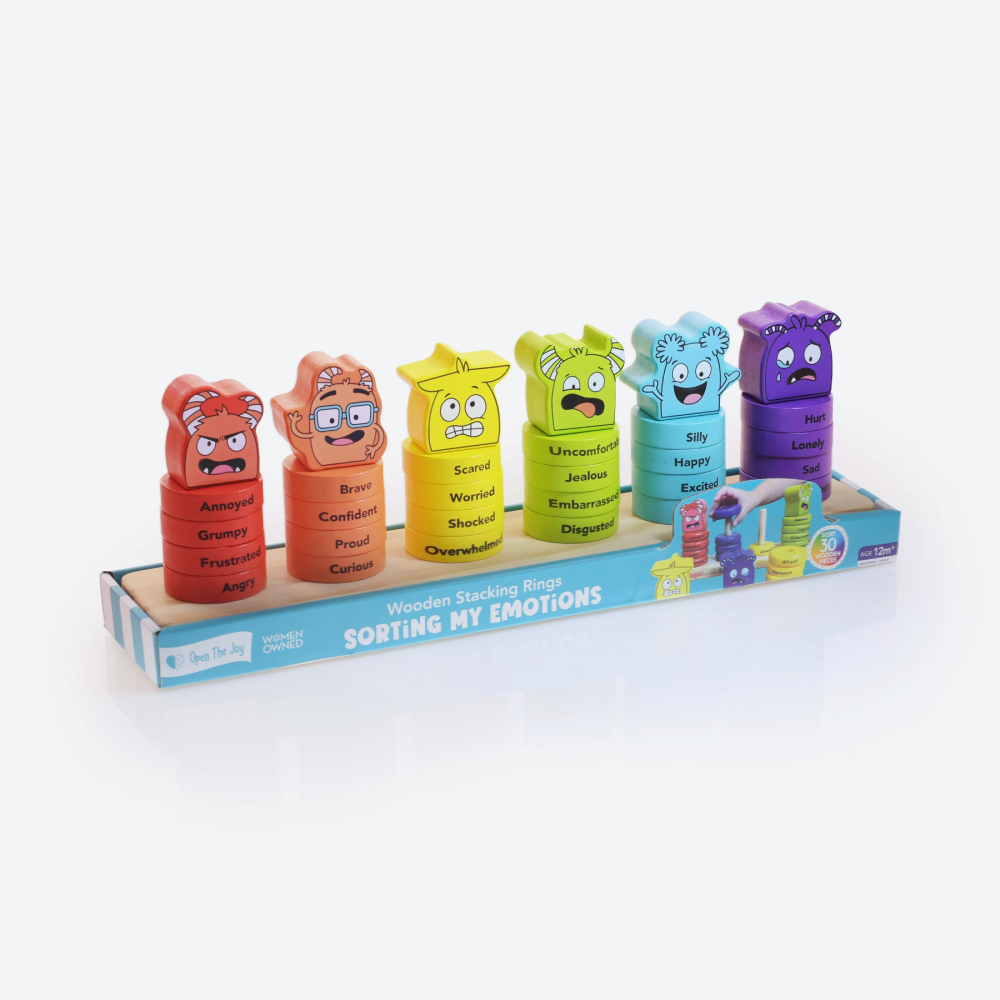Big Feelings, Little Bodies: Helping Kids Name Their Emotions

Ever watch a toddler melt down over the wrong color cup? You're not alone—and it's not about the cup. It’s about emotional overload in a little body that hasn’t yet learned the magic skill of naming feelings. Kids aren't born knowing how to say, "I'm frustrated" or "I'm feeling anxious." Instead of saying it, they SHOW IT. The good news? You can teach them how to name and navigate their big feelings. And when you do, you're laying the foundation for lifelong emotional intelligence.
How to help kids name & navigate their feelings
-
Narrate emotions in real time. "You're smiling—you must be feeling happy!" or "I’m feeling a bit overwhelmed right now, so I’m going to take a deep breath."
-
Use Books & Stories: Picture books like The Color Monster or Glad Monster, Sad Monster are goldmines for emotion-labeling. Or, ask kids to describe how their favorite book or tv characters might be feeling.
-
Use a Feelings Chart: Visual aids with faces and emotion words help younger children recognize and name their feelings.
Putting it in action: Real-Life Tips & Scripts
We get it - this all sounds great, but it’s easier said than done. So here are some practical, bite-sized ways to sneak emotional learning into your day:
Introduce One New Emotion Each Weak - Start small. Pick one feeling - like “disappointed” or “proud”—and use it throughout the week. You’ll be surprised how quickly your child will pick it up and start using it.
Use Playtime to Practice- Play is kids' natural language. Use dolls, puppets, or stuffed animals to act out different feelings and talk about them. “This bear is sad because his friend didn’t want to play. What could he do?”
Create a Calm-Down Routine- Set aside a time to purposefully ask your child about their feelings and practice calming skills like taking deep breaths. Practicing each day, like at bedtime, during dinner, or even on the car ride to school teaches kids to name and understand their feelings and gives you time to connect with them.
The Long-Term Payoff
Helping kids name their emotions might feel like a small thing in the moment, but it has lifelong benefits. Children who can identify and express their feelings are better equipped to solve problems, form strong relationships, handle challenges, and build resilience. You're not just avoiding meltdowns—you’re nurturing emotionally intelligent humans who will thrive far beyond the toddler years.
So next big feelings start to come up, take a deep breath and remember: this is a chance to teach a life skill, one emotion at a time.




